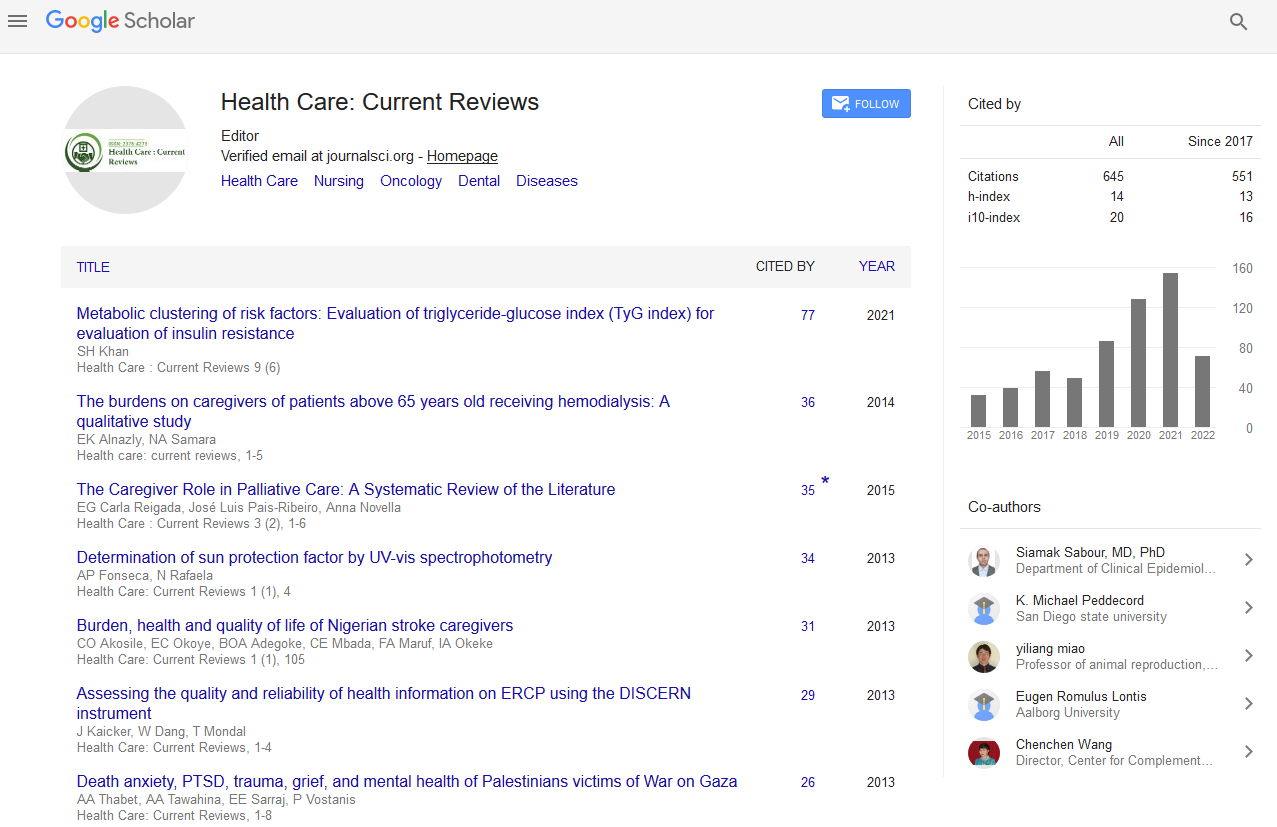PMC/PubMed Indexed Articles
Indexed In
- Open J Gate
- Academic Keys
- RefSeek
- Hamdard University
- EBSCO A-Z
- Publons
- Geneva Foundation for Medical Education and Research
- Google Scholar
Useful Links
Share This Page
Journal Flyer

Open Access Journals
- Agri and Aquaculture
- Biochemistry
- Bioinformatics & Systems Biology
- Business & Management
- Chemistry
- Clinical Sciences
- Engineering
- Food & Nutrition
- General Science
- Genetics & Molecular Biology
- Immunology & Microbiology
- Medical Sciences
- Neuroscience & Psychology
- Nursing & Health Care
- Pharmaceutical Sciences
Cardiovascular risk factors of civil servants in Southwest Nigeria
4th Global Summit on Healthcare
November 09-10, 2015 Dubai, UAE
Nupo Sunday Sedodo1, Oguntona Clara R B2, Oguntona Babatunde2, Akinloye O A2 and Olunusi P A2
1Moshood Abiola Polytechnic, Nigeria
2Federal University of Agriculture, Nigeria
Posters-Accepted Abstracts: Health Care: Current Reviews
Abstract:
Objectives: Cardiovascular diseases are now becoming dominant sources of morbidity and mortality worldwide. Aim: The aim of the study is to assess the salt, sugar, fat intake and level of vulnerability of civil servants to cardiovascular disease in Abeokuta Ogun State. Methodology: A cross sectional study was carried out among randomly selected 202 male and 298 female civil servants in Abeokuta Ogun state to determine their cardiovascular risk factors. A pretested structured questionnaire was used to elicit information on socio economic characteristics and physical activity pattern. Body Mass Index (BMI), Waist to Hip Ratio (WHR) and Mid Upper Arm Circumference (MUAC) were used to determine the nutritional status of the subjects. Sugar, fat and nutrient intake was obtained using 24- hour dietary recall technique. The blood pressures of the subjects were measured and classified using World Health Organization criteria. Cardiovascular Risk was determined using American Heart Diseases software Version 10. Data collected were analyzed using Statistical package for social science version 17.1. Results: Majority (76%) of the subjects were within the age range of 20 - 40 years, 75% earned between N58,500 - N98,000 monthly and 68% were sedentary. The BMI showed that 4% were underweight, 54% had normal weight, 26% were overweight and 16% were obese. The mean energy intake of men and women were 3942±38 kcal and 2791±3 kcal respectively, while the protein intake for men was 65±49 g/day and 54.28±40 g/day for women. The mean sugar intake for men and women were 128.9±12 g/day and 120.6±12 g/day (p>0.05) respectively, while the mean fat intake for men and women were 27.45±02 g/ day and 24.75±07 g/day respectively. Cardiovascular disease risk showed that (93%) of the subjects had low risk while 7% had average risk. Conclusion: The study showed significant relationship (r<0.05) between salt consumption, sugar intake, overweight, obesity as well as sedentary lifestyle and the risk of developing cardiovascular diseases. The risk of developing cardiovascular diseases was low among the male and female subjects.
Biography :
Email: sundaynupo@yahoo.com


